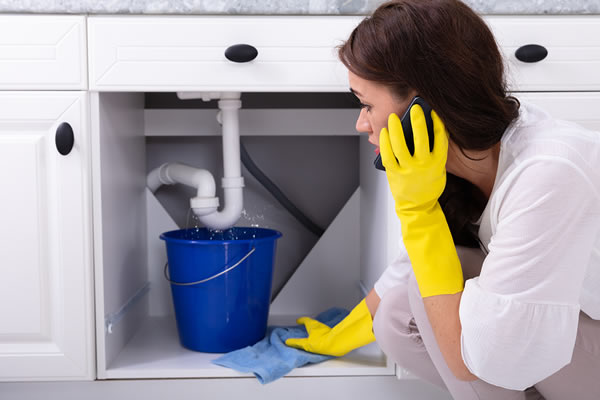Guide To Water Leak Detection In Your Home
Guide To Water Leak Detection In Your Home
Blog Article
We've stumbled on this post relating to Locating water leaks listed below on the net and decided it made sense to discuss it with you in this article.

Early detection of dripping water lines can alleviate a prospective disaster. Some little water leakages may not be noticeable.
1. Check Out the Water Meter
Examining it is a guaranteed means that helps you find leaks. If it moves, that shows a fast-moving leak. This indicates you might have a slow leak that might also be underground.
2. Inspect Water Intake
Assess your water expenses and also track your water consumption. As the one paying it, you must notice if there are any type of disparities. If you spot sudden changes, in spite of your consumption coinciding, it suggests that you have leaks in your plumbing system. Keep in mind, your water costs need to fall under the exact same variety on a monthly basis. A sudden spike in your expense suggests a fast-moving leakage.
On the other hand, a consistent rise every month, despite the very same behaviors, reveals you have a slow leak that's also slowly escalating. Call a plumber to extensively examine your residential or commercial property, particularly if you feel a warm area on your floor with piping underneath.
3. Do a Food Coloring Test
When it comes to water usage, 30% comes from commodes. If the color in some way infiltrates your dish during that time without flushing, there's a leakage in between the tank as well as dish.
4. Asses Exterior Lines
Don't fail to remember to inspect your outside water lines too. Test spigots by connecting a garden hose. Needs to water seep out of the link, you have a loosened rubber gasket. Change this as well as ensure all links are tight. If you've obtained a lawn sprinkler, it will aid get it skillfully took a look at and maintained each year. One small leakage can throw away lots of water as well as increase your water expense.
5. Examine and also Analyze the Circumstance
Home owners should make it a routine to examine under the sink counters and even inside cupboards for any kind of bad odor or mold growth. These 2 warnings indicate a leak so timely focus is required. Doing routine assessments, also bi-annually, can save you from a major problem.
Inspect for stainings and compromising as many pipelines as well as devices have a life expectations. If you suspect leaking water lines in your plumbing system, don't wait for it to escalate.
Early discovery of dripping water lines can alleviate a potential disaster. Some tiny water leakages might not be visible. Checking it is a proven means that assists you find leaks. One little leakage can squander bunches of water and also surge your water bill.
If you believe dripping water lines in your plumbing system, don't wait for it to rise.
How to Know If Your Home Has a Hidden Leak
Water Meter Reveals Inexplicable Water Usage
If you’d like to test whether or not there’s a leak somewhere in your home, you can do this using your water meter. Here is how to conduct the test:
Don’t use any water in your home for at least 30 minutes; this also means not turning on faucets or water-using appliances.
Go outside, and check your water meter for activity.
If your water meter shows that there was activity, even though no one was using any water, this proves that there is a leak in your home.Visible Mold or Mildew Growth
Leaks behind walls create moist, dark environments that allow mold and mildew to grow and thrive. Eventually, you might see mold growth forming on the wall closest to a hidden leak.
If mold is growing in an area that receives a high amount of moisture, such as a bathroom, it may simply be an indication that better ventilation is needed. However, if you see mold growth on a wall or the ceiling in an area where you would not expect, you probably have a hidden leak.
Musty, Mildew Odor
Sometimes you might not be able to see the mold or mildew that is growing as a result of a leak. However, the smell can give the problem away just as easily. If you catch a whiff of something musty, there’s a good chance that old water is collecting somewhere in your home that you can’t see.
Stained/Warped Walls, Ceilings, or Floors
When your home soaks up water, a variety of red flags can become visible, including ceiling stains, bubbling drywall, warped walls, and sagging floors. While these issues can be caused by excess humidity, they can also be signs that a pipe or plumbing connection has started leaking behind your walls.
Inexplicably High Water Bill
After a while, you get a general sense for what your water bill should be. If you own a pool or sprinkler system, your bill will tend to be higher during summer. However, if you receive a water bill that seems especially high, and you can’t figure out what caused it, then you may have a hidden leak somewhere that’s increasing your bill.
https://www.plumbingjoint.com/blog/2019/july/how-to-know-if-your-home-has-a-hidden-leak/

I was shown that write-up on Leaking water lines through someone on our other web page. Are you aware of somebody who is interested by the subject? Be sure share it. Many thanks for taking the time to read it.
Report this page